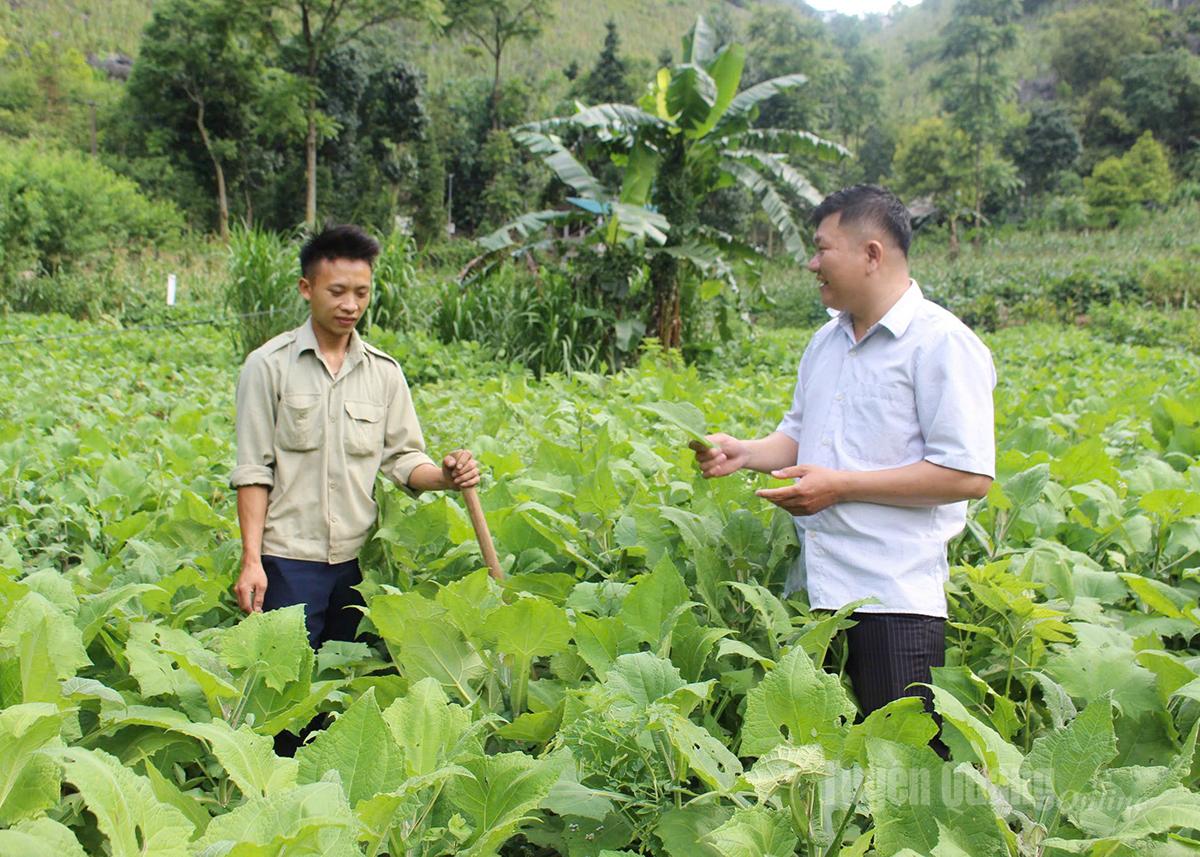Converting crop structure to improve farmers’ income in Tuyen Quang upland areas
Converting crop structure has become an inevitable direction in Tuyen Quang’s upland communes, contributing to the promotion of agricultural value and the improvement of local people’s incomes. Thanks to selecting plants suited to the soil, climate, and market demand, many households have escaped poverty and achieved sustainable livelihoods.
 |
| Growing ‘khoai sam’ (yacon root) brings high economic value for farmers in Dong Van commune. |
Mr. San Ngoc Huy, a member of the Bo Y ethnic minority in Nam Luong hamlet (Quan Ba commune), struggled with poverty by converting crop structure. Realizing that the local cool climate, abundant water, and fertile land were sustainable for cucumbers and tomatoes, he and 37 households in the hamlet decided to shift to growing them in 2022. They earned a combined income of about VND 1 billion. By 2023, he had formed a clean vegetable production area, supplying seeds and guaranteeing purchase for farmers.
In Ha Sung hamlet (Dong Van commune), Mr. Vang Mi Say successfully switched from maize to ‘khoai sam’ (yacon root) and earned nearly VND30 million this year.
In Phu Luu commune, Mr. Nong Quoc Doanh converted 12 hectares to Thai jackfruit. After three years, his jackfruit garden has grown well, bringing an annual profit of about VND300 million. He said that: “Compared with oranges, Thai jackfruit is easier to grow and maintain, and offers stable returns.
In Seo Lung B hamlet, Sa Phin commune, 72 H’mong households have also shifted from maize to off-season cabbage farming. To date, more than 30 households cultivate over 20 hectares of cabbage.
To sum up, converting crop structure not only ensures better incomes but also opens a new path of sustainable agricultural development for upland farmers in Tuyen Quang.
My Ly





READER COMMENTS